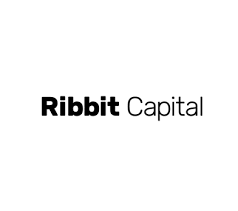An Analysis of the Lending Agreement Morpho: How Did It Raise Over $80 Million?
Author: Karen, Foresight News
On the first day of August, the lending protocol Morpho Labs announced the completion of a $50 million financing round, led by Ribbit Capital, with participation from top venture capital firms including a16z crypto. Notably, this is a16z's second investment in Morpho.
So, what exactly is Morpho, and what unique advantages does it possess that have attracted such significant funding?
What is Morpho?
Morpho was first launched two years ago, with its core product being Morpho Optimizer. Morpho Optimizer serves as an optimization layer on top of Aave and Compound, enhancing users' lending rates through a peer-to-peer matching algorithm.
Today, Morpho has evolved into an independent financial infrastructure, with its lending layer Morpho Blue operating independently from Morpho Optimizers, allowing for the creation of efficient lending markets in a permissionless manner.
It is worth mentioning that Morpho Blue also supports the construction of additional modular layers on top of it. These modular layers can provide users with diversified risk configurations and more specialized lending services, while still relying on Morpho Blue as the foundational layer.
In terms of project background, Morpho Labs has four co-founders: Merlin Egalite, Paul Frambot (CEO), Mathis Gontier Delaunay (protocol lead), and Julien Thomas. According to Forbes, Morpho Labs CEO Paul Frambot secured seed funding in his final year as an engineering student. Merlin Egalite previously served as a white hat for smart contracts at the blockchain dispute resolution layer Kleros and worked as a software development engineer at Commons Stack.
In mid-2022, Morpho completed a $18 million financing round, led by a16z and Variant, with participation from 80 institutions and individual investors including Nascent, Semantic Ventures, Cherry Ventures, Mechanism Capital, Spark Capital, Standard Crypto, and Coinbase Ventures.
In the $50 million financing completed by Morpho Labs earlier this month, Ribbit Capital led the round, with participation from a16z crypto, Coinbase Ventures, Variant, Pantera, Brevan Howard, BlockTower, Kraken Ventures, Hack VC, IOSG, Rockaway, L1D, Semantic, Mirana, Cherry, Fenbushi, LeadBlock Bitpanda Ventures, Robot Ventures, and more than 40 other companies.
How does Morpho operate?
The Morpho Blue platform is designed to be flexible, allowing for the creation of independent markets in a permissionless manner. Specifically, by specifying a collateral asset, a loan asset, a liquidation loan-to-value (LLTV), an interest rate model (IRM), and the oracle to be accessed, independent loan markets can be deployed. Once all parameters are set, they remain fixed and cannot be modified.
This approach enables project teams to more effectively tailor incentive strategies for specific application scenarios. This primarily relies on the Universal Reward Distributor (URD) mechanism, which can simultaneously meet the needs of external project incentives and MORPHO token rewards, addressing the complexities associated with DeFi reward distribution.
For obtaining price information, Morpho Blue maintains simplicity by utilizing external oracles, and the platform is compatible with various oracle services such as Chainlink, Redstone, and Uniswap.
In the liquidation process, Morpho Blue adopts an intuitive operation method. When a user's loan-to-value (LTV) ratio in a specific market exceeds the market's liquidation loan-to-value (LLTV), the account's position faces liquidation risk. Anyone can execute the liquidation by repaying the account's debt in exchange for an equivalent market collateral asset and incentives.
Additionally, Morpho Blue employs a different strategy for handling bad debts compared to conventional lending protocols. Specifically, if an account still has outstanding debts after liquidation and lacks collateral to cover the losses, this portion of the loss will be shared among all lenders according to a predetermined ratio. While the design of having LPs bear the bad debt risk has raised confusion in the community, as Morpho CEO Paul Frambot stated, Morpho will not go bankrupt due to this; even with bad debts, it will only affect specific independent markets.
It is noteworthy that Morpho Blue differs from protocols like Aave or Compound in asset representation, which use aTokens or cTokens, instead employing a smart contract-level mapping mechanism to track user positions. Under this mechanism, users' assets are managed in the form of "shares," enabling high-precision tracking of asset allocation within the Morpho Blue protocol. This not only ensures accurate calculations of asset and liability values but also provides a more accurate display of supply and borrowing balances, effectively preventing potential manipulation of share prices.
To enhance lending efficiency and simplify user experience, Morpho Blue focuses solely on lending operations, while the MetaMorpho built on top of it enables permissionless market creation and risk management.
MetaMorpho is a lending vault protocol built on the Morpho Blue protocol, corresponding to the Earn section in Morpho. As shown in the image below, DAOs, protocols, individuals, hedge funds, and others can create vaults in MetaMorpho without permission. Each vault contains a loan asset and can customize its risk exposure, allocating deposits to one or more Morpho Blue markets.

In this process, the vault earns returns by providing funding services to borrowers, who must deposit collateral to access the liquidity of the underlying assets and pay corresponding interest to the vault.
The revenue structure of MetaMorpho vaults includes native annual percentage yield (APY), reward annual percentage rate (APR), and MORPHO token rewards.
What are the highlights of Morpho?
The primary highlight of Morpho Blue is its permissionless feature. This design allows for the autonomous deployment of isolated lending markets by setting diverse parameters, without relying on external governance to launch assets or manage parameters, granting creators of lending markets a high degree of autonomy to independently manage the risks and returns of lending pools based on personal assessments, thus meeting the diverse risk preferences and use case demands in the market.
The design of MetaMorpho vaults effectively simplifies the lending process, enhances user experience, and aggregates market liquidity, providing users with opportunities to enter independent markets and participate in lending pools, while also allowing them to conveniently provide liquidity and passively earn interest.
Another significant highlight of MetaMorpho vaults is the customizable risk strategies and performance fee parameters. Each vault can configure different risk exposures and performance fee parameters according to specific needs; for example, a vault focused on LST assets will only hold LST-related risk exposures, while another RWA vault may focus on RWA assets. This flexibility allows users to precisely select and invest in vaults that suit their risk preferences and investment goals.

Morpho Blue also embeds a fee switch mechanism within the protocol, providing the possibility for future dynamic adjustments to the fee structure through community governance decisions. This mechanism allows for charging fees ranging from 0% to 25% of the total interest amount from borrowers in specific markets, with all collected fees directly injected into Morpho DAO. It is important to clarify that Morpho DAO cannot charge fees on MetaMorpho; the MetaMorpho vault earns performance management fees from users. This design maintains a balance of interests between the vault and its users.
How is the Morpho token distributed?
MORPHO, as the core governance token of the Morpho protocol, has been officially issued but is currently non-circulating. Its core value lies in granting holders the right to participate in significant decisions regarding the protocol. Whether it is the deployment strategy of Morpho smart contracts, ownership attribution, the activation and adjustment of the fee switch, or the financial management of the governance DAO, MORPHO holders can express their opinions through voting, collectively shaping the future direction of the protocol.
The maximum total supply of MORPHO is 1 billion tokens, of which 27.6% is allocated to investors, 15.2% to the founding team, 4.8% to early contributors such as contributors, independent researchers, and advisors, 6% to Morpho Labs reserves, 6.6% to Morpho Association reserves, 35.7% to Morpho DAO, and 4.2% to users (the amount may increase).
How is Morpho Blue performing?
Since Morpho Blue launched on the Ethereum mainnet at the beginning of this year, as of the time of writing, it has accumulated a total deposit amount of $1.35 billion, while the total borrowing amount has reached $510 million. Notably, since its launch on Base in mid-June, Morpho Blue has rapidly emerged, achieving a deposit increase of $110 million and a borrowing increase of $36.84 million. Meanwhile, Morpho Optimizer has also performed relatively well, with a total deposit amount of $910 million.
Morpho Blue currently has deployed 43 and 32 MetaMorpho vaults on the Ethereum mainnet and Base chain, respectively, providing users with diverse lending and asset management options to meet the needs of different risk preferences and investment demands.
According to the latest data from DefiLlama, in the DeFi lending sector, Morpho ranks fifth in TVL, only behind Aave, JustLend, Spark, and Morpho.












